|
|
|
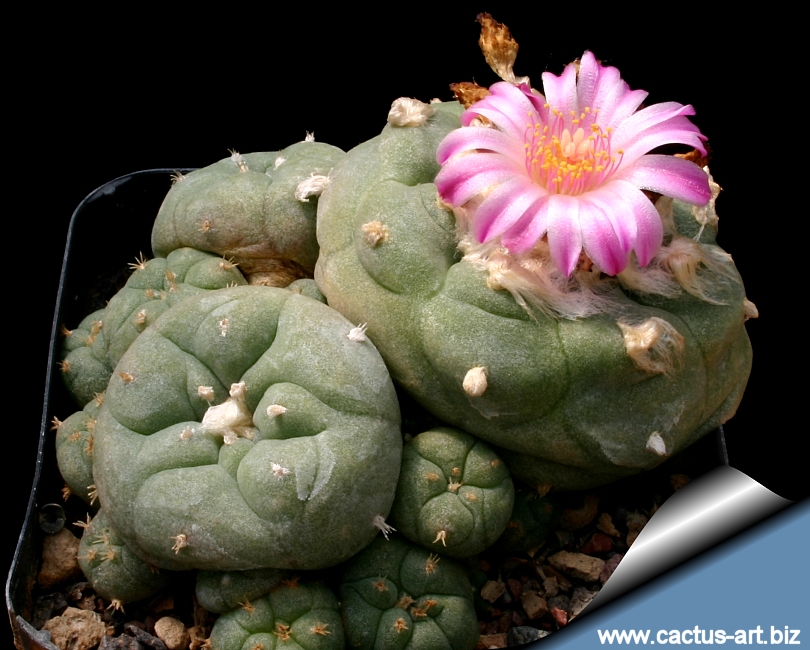
Old plant forms dense
cluster . Note the presence of small and long
persisting
spines on young
areoles.
Lophophora jourdaniana differs from the other lophophora species
described until now by rose-violet perianth, pistil, filaments.
|
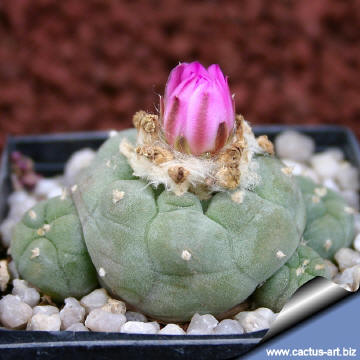 |
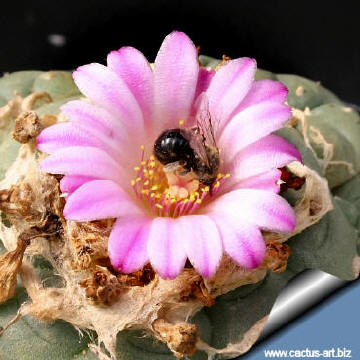 |
|
The
thigmotropic stamens (i.e. stamens that when touched fold in around
the style) are another peculiarity of this odd plant. |
|
Cultivation:
Slow growing. Because of the tap root
they are very rot prone, so use highly gritty compost with much drainage.
Requires half shade to part sun. Watering: waterings should be
rather infrequent to keep the plant compact and not to become
excessively elongated and unnatural in appearance,
watering it properly is often difficult
because this plant tends to crack open or rot if over-watered.
The fact that the plant retracts into the soil and assume a grey-green
colouring between watering, is perfectly natural and doesn’t cause any
damage.
Overwintering: Keep completely dry and cool in winter (An unheated
greenhouse would be perfect) or when night temperatures remain below 10°
C, it can survive low temperatures (appr. -7°C) for a short
period. Assure a good ventilation.
Propagation: Easy to
propagate from cuttings or grafting.
|
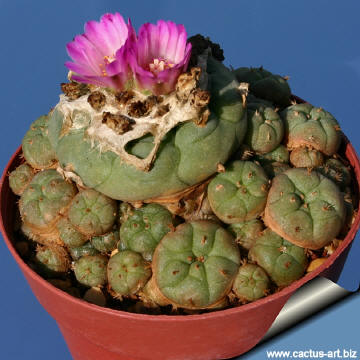 |
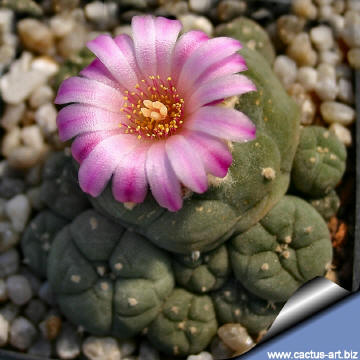 |
|
The open flower clearly contradicts Habermann’s
claim of
cleistogamic flowers . Apparently Habermann misunderstood or used
this term incorrectly as the photo accompanying the type description
also shows a plant with an open flower. |
|
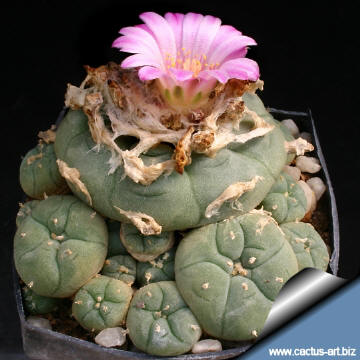 |
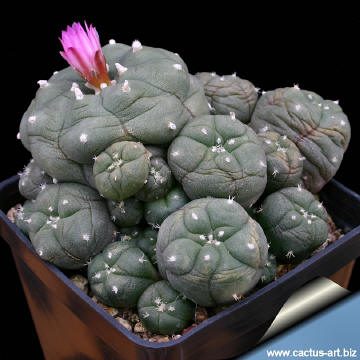
|
|


Advertising
|
|
|
|
|
|
|
Family:
Cactaceae (Cactus
Family)
Scientific name:
Lophophora jourdaniana Habermann
sp. n. 1975
Origin:
Unknown (Perhaps it
is a nursery
produced cultivar)
Some people suppose L.
jourdaniana may perhaps be an
hybrid between
L.
williamsii and
L. fricii.
Furthermore L. jourdaniana is called L. williamsii var.
jourdaniana by some other people. These same people labels
L. fricii as L. williamsii var. fricii. This is incorrect
because L. fricii is not a variation of L. williamsii,
and also the
breading of the two different
species seems impossible, in fact the
flowers are frequently
cleistogame. It is not possible to fertilize L. jourdaniana
with the pollen of L. williamsii, nor with the pollen of
L. diffusa and L. fricii. Some websites say this species
contain some mescaline, but at a much lower content than williamsii,
some other say it don't contain the alkaloid at all, because this plant
is more related to diffusa than williamsii.
Conservation status: Listed in
CITES appendix 2.
|
|
Description: Clumping
flattened cactus. Slowly forms small clumps up to 15cm in diameter.
Stem: Glaucous green (but more darker green than L. williamsii)
are up to 4 cm tall, 5 cm in diameter, with a woolly top.
Ribs: 5 to 9 (or more).
Areoles: With some bunches of greyish hairs, up to 1cm long.
Spines: Small short, thin and long persisting on young areoles.
Flower: 2.5-3,5 cm in diameter that emerge from the mass of hairs in
the center of the plant. Perianth, pistil, and filaments rose-violet;
The stamens are
thigmotropic.
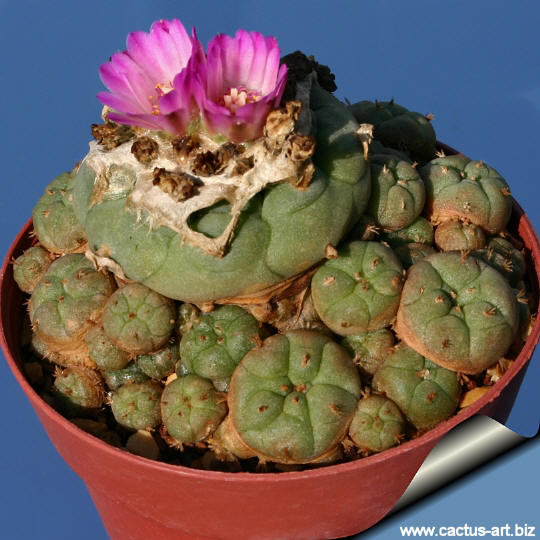
|
|
|
|
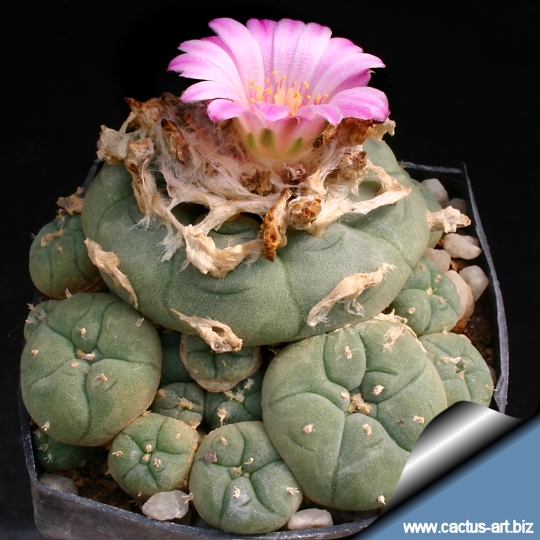
The open flower clearly contradicts Habermann’s
claim of
cleistogamic flowers . Apparently Habermann misunderstood or used
this term incorrectly as the photo accompanying the type description
also shows a plant with an open flower.
|
|
Photo of conspecific taxa, varieties, forms and
cultivars of
plants belonging to the Lophophora williamsii
complex
(This
Taxon
has several controversial varieties and subspecies and comprises a multitude of different forms, but where each form
is linked to others by populations of plants with intermediate
characteristics):
|
|